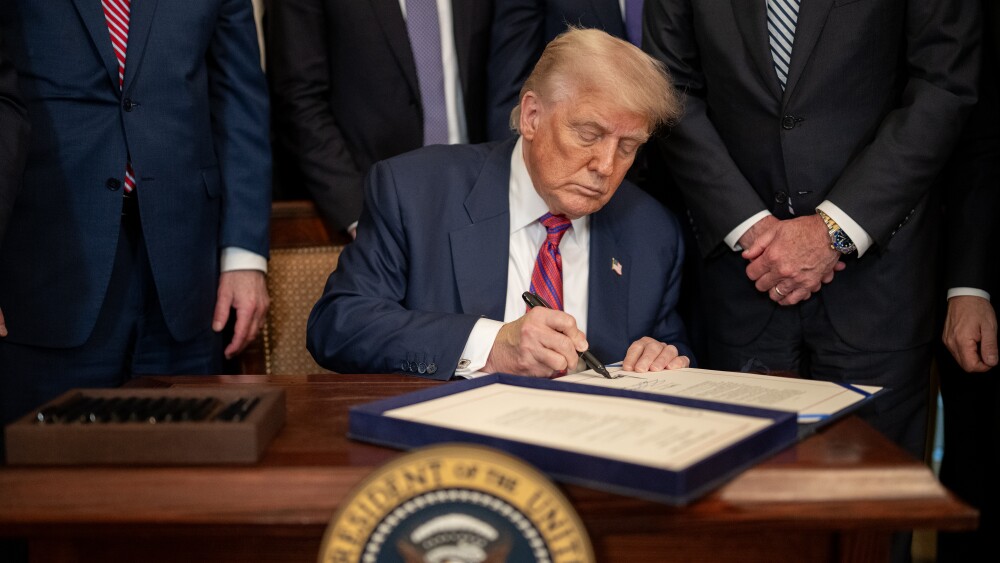ATLANTA, Sept. 26, 2014 (GLOBE NEWSWIRE) -- Biota Pharmaceuticals, Inc. (Nasdaq:BOTA) (the "Company") today announced financial results for its fourth quarter and fiscal year ended June 30, 2014, and provided an update on a number of recent corporate developments.
"As we continue to evaluate potential next steps for our laninamivir program, we have adopted a strategy that includes further reducing our overhead costs, continuing to advance the development of our vapendavir and RSV programs, and considering a range of corporate development transactions that we believe can complement our pipeline and enhance our value creation potential", stated Russell H. Plumb, President and Chief Executive Officer of Biota Pharmaceuticals, Inc. "Based on the significant progress we have made with our non-influenza antiviral programs over the past several months, we plan to initiate a Phase 2 trial of vapendavir early next year and advance BTA-C585, our RSV fusion inhibitor, through IND-enabling studies and into Phase 1 clinical trials in mid-2015."
Financial Results for the Three Month Period Ended June 30, 2014
The Company reported a net loss of $10.2 million for the three month period ended June 30, 2014, as compared to a net loss of $6.5 million in the same period of 2013. The $3.7 million increase in net loss in 2014 was primarily the result of a $2.6 million change from a foreign exchange gain in 2013 to a loss, a $2.2 million increase in the cost of revenue, a $0.6 million increase in research and development expense and a $0.8 million decrease in gross revenues, offset in part by a $2.1 million decrease in general and administrative expense and a $0.4 million change from income tax expense to a benefit. Basic and diluted net loss per share were $0.29 for the three month period ended June 30, 2014, as compared to a basic and diluted net loss per share of $0.23 in the same period of 2013.
Revenue decreased to $8.5 million for the three month period ended June 30, 2014 from $9.3 million in the same period of 2013, primarily as a result of a $1.6 million decrease in contract service revenue related to the cancellation of the Company's contract with the Biomedical Advanced Research and Development Authority (BARDA) in May 2014, and a $0.2 million decrease in other income, offset in part by a $1.0 million increase in royalty revenues. For the three month period ended June 30, 2014, the Company did not recognize $3.7 million of contract service revenue or accounts receivable relating to amounts the Company believes it is entitled to be reimbursed for under its terminated contract with BARDA and pursuant to applicable government regulations, but for which it potentially may not be fully reimbursed.
Cost of revenue increased to $9.7 million in the three month period ended June 30, 2014 from $7.5 million in the same period in 2013 due to an increase of $1.1 million in direct third-party clinical costs incurred associated with the Phase 1 and 2 clinical trials and manufacturing activities to develop LANI and severance obligations of $1.6 million related to certain positions that were eliminated as a result of the Company's restructuring plan, offset in part by a $0.5 million decrease in other expenses under the Company's recently-terminated contract with BARDA.
Research and development expense increased to $6.3 million for the three month period ended June 30, 2014 from $5.7 million in the same period of 2013. The $0.6 million increase was the result of a $1.4 million increase in direct preclinical, clinical and manufacturing costs primarily related to the advancement of the Company's vapendavir and RSV programs, a $1.0 million charge for severance obligations recorded during 2014 related to positions that were eliminated as a result of the Company's restructuring plan, and a $0.1 million increase in other indirect expenses, offset in part by a $1.9 million reduction in ongoing compensation expense associated with staff reductions that occurred during 2013 and in previous quarters in 2014.
General and administrative expense decreased to $2.2 million for the three month period ended June 30, 2014 from $4.3 million in the same period of 2013 primarily due to a $2.0 million decrease in salaries, benefits and share-based compensation expense resulting from reductions in the Company's workforce that occurred during 2013 and in previous quarters in 2014, as well as a reduction in other expenses as a result of a smaller administrative structure.
Financial Results for the Fiscal Year Ended June 30, 2014
For the year ended June 30, 2014, the Company reported a net loss of $11.0 million, as compared to $8.9 million in 2013. The $2.1 million increase in net loss in 2014 was the result of a $31.4 million increase in cost of revenue, a $3.3 million change from a foreign exchange gain in 2013 to a loss, non-recurring other income of $12.0 million that was recorded in 2013 as a result of a gain on merger and a research and development tax credit, and a $1.1 million decrease in interest income, offset in part by a $35.1 million increase in revenue, a $7.8 million decrease in general and administrative expense, a $2.4 million decrease in research and development expense and a $0.4 million change from income tax expense to a benefit. Basic and diluted net loss per share were $0.35 for the year ended June 30, 2014, as compared to a basic and diluted net loss per share of $0.32 in 2013.
Recent Corporate Developments
Changes to the Company's Board and Management – In a separate press release, the Company today announced a number of changes to its board of directors and management team. The board has appointed Joseph M. Patti, PhD to the position of President and Chief Executive Officer, replacing Russell H. Plumb, who has been appointed Executive Chairman of the Board of Directors and will continue to have certain ongoing responsibilities with the Company. James Fox, PhD is resigning as Chairman of the Board of Directors, but will remain on the board as its Lead Director. These changes will become effective as of October 1, 2014.
Corporate Strategy – The Company announced that, based on a strategic review of the Company, its assets and prospects, its Board of Directors has adopted a near-term strategic and operating plan, summarized as follows: (i) closely align internal overhead costs with anticipated royalty revenues; (ii) advance the development of the Company's vapendavir and RSV programs (iii) proactively consider a range of corporate development or other strategic transactions that can complement the Company's pipeline and enhance the creation of shareholder value, and (iv), discuss the Phase 2 IGLOO trial results with the FDA and work in concert with Daiichi Sankyo, its partner on LANI, to out-license the rights to the program outside of Japan.
Relenza® – The Company announced that GlaxoSmithKline (GSK) has confirmed that the Company will continue to receive royalties on the net sales of Relenza® in the U.S. beyond December 2014 to the extent that U.S. Patent Application No. 08/737,141 remains pending. On August 25, 2014, GSK filed an appeal to the United States Patent Trial Appeal Board in relation to this patent application. While the Company cannot determine the duration or the outcome of this appeal process, or how long this patent application will remain pending, if the patent claims are ultimately issued, the Company anticipates that it would be eligible to receive royalties from net sales of Relenza® in the U.S. for an additional 17 years from the date of allowance.
Respiratory Syncytial Virus (RSV) Program – On September 8, 2014, the Company presented preclinical data on BTA-C585, an oral small molecule F-protein inhibitor, at the 54th Interscience Conference on Antimicrobial Agents and Chemotherapy (ICAAC) Meeting in Washington, DC. Data presented at ICAAC included the results from a number of in vivo studies designed to assess the antiviral activity of BTA-C585 prior to and during experimental RSV infection in a cotton rat model, which demonstrated a dose-dependent decrease in virus titers in lung tissue. Similarly, a highly significant dose-dependent decrease in RSV mRNA in lung tissue was also observed in the cotton rat model. Further, preliminary, non-clinical oral, single and multiple-dose data from several animal toxicology studies indicated that BTA-C585 was highly bioavailable and well tolerated. The Company has initiated IND-enabling studies with BTA-C585 and subject to the successful completion of these studies, believes it can be positioned to file an IND and initiate Phase 1 clinical trials in mid-2015.
Vapendavir – The Company has completed enrollment in a bioavailability study in 36 healthy volunteers designed to establish the systemic exposure profile of a single dose of a vapendavir free-base tablet formulation compared to a single dose of an existing capsule phosphate salt formulation, which was the formulation used in all previous clinical trials of vapendavir. The Company plans to conduct additional formulation activities on a free-base formulation to further improve its characteristics. The Company filed a patent application for this free-base formulation in 2014 and if issued, it would expire in 2034, without extensions. The Company also recently completed enrollment in a drug-drug interaction study in 24 healthy volunteers to assess the effect of vapendavir on the pharmacokinetic profile of midazolam, a CYP3A4 substrate. The results of the study confirmed both vapendavir's pharmacokinetic profile as established in prior clinical trials, and that vapendavir is a weak to moderate inducer of CYP3A4, which suggests that vapendavir can be used to treat asthma and COPD patients receiving multiple background medications. Vapendavir was well tolerated and there were no untoward safety trends in both of these Phase 1 studies.
The Company plans to initiate a randomized, double-blind, placebo-controlled dose-ranging Phase 2 trial in moderate and severe asthmatic patients at risk of loss of asthma control due to presumptive human rhinovirus (HRV) infection in the first quarter of 2015. The planned Phase 2 trial is expected be conducted at approximately 60 sites across six to eight countries in North America and Central Europe, with an anticipated enrollment of approximately 375 patients. The planned primary endpoint is the Least Square (LS) mean change from baseline to Study Day 14 in ACQ-6 total score. ACQ-6 is a validated tool designed to assess asthma control and utilizes both patient reported outcomes and forced expiratory volume in 1 second (FEV1). Planned secondary endpoints include the measurement of asthma exacerbations, changes in lung function, virology outcomes as well as effects on symptoms of HRV infection. The primary efficacy analysis population will be the ITT-infected population, defined as all subjects with confirmed HRV infection who receive a study treatment. The Company is also considering a Phase 2a HRV challenge study with vapendavir in patients with chronic obstructive pulmonary disease (COPD).
Laninamivir Octanoate – On August 1, 2014, the Company announced top-line data from a randomized, double-blind, placebo-controlled, parallel-arm Phase 2 clinical trial comparing the safety and efficacy of 40 mg and 80 mg doses of laninamivir octanoate (LANI) with placebo. The Company refers to this trial as "IGLOO". The primary endpoint of IGLOO was the difference in the median time to alleviation (reported to be mild or absent for greater than 24 hours) of all seven influenza symptoms (headache, feeling feverish, body aches and pains, fatigue, cough, sore throat and nasal congestion) plus fever. Symptom data were collected through the influenza intensity domain of the influenza intensity and impact Flu-iiQTM questionnaire. As compared to placebo, neither the 40 mg nor the 80 mg cohort achieved a statistically significant difference in the median time to alleviation of all seven influenza symptoms plus fever. The median time to alleviation of all of the seven influenza symptoms plus fever was 102.3 hours for the 40 mg cohort and 103.2 hours for the 80 mg cohort, as compared to 104.1 hours for the placebo cohort.
For full article, please click here.
Help employers find you! Check out all the jobs and post your resume.




